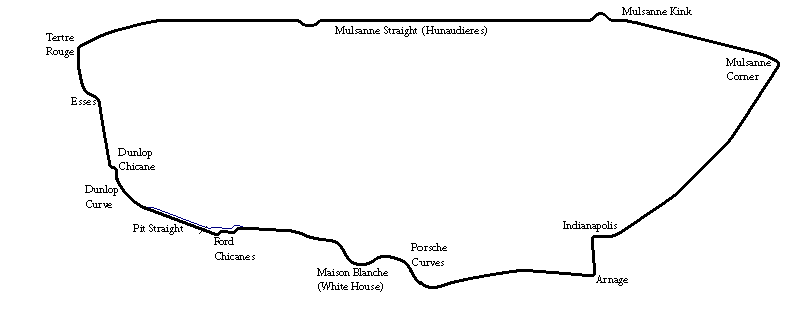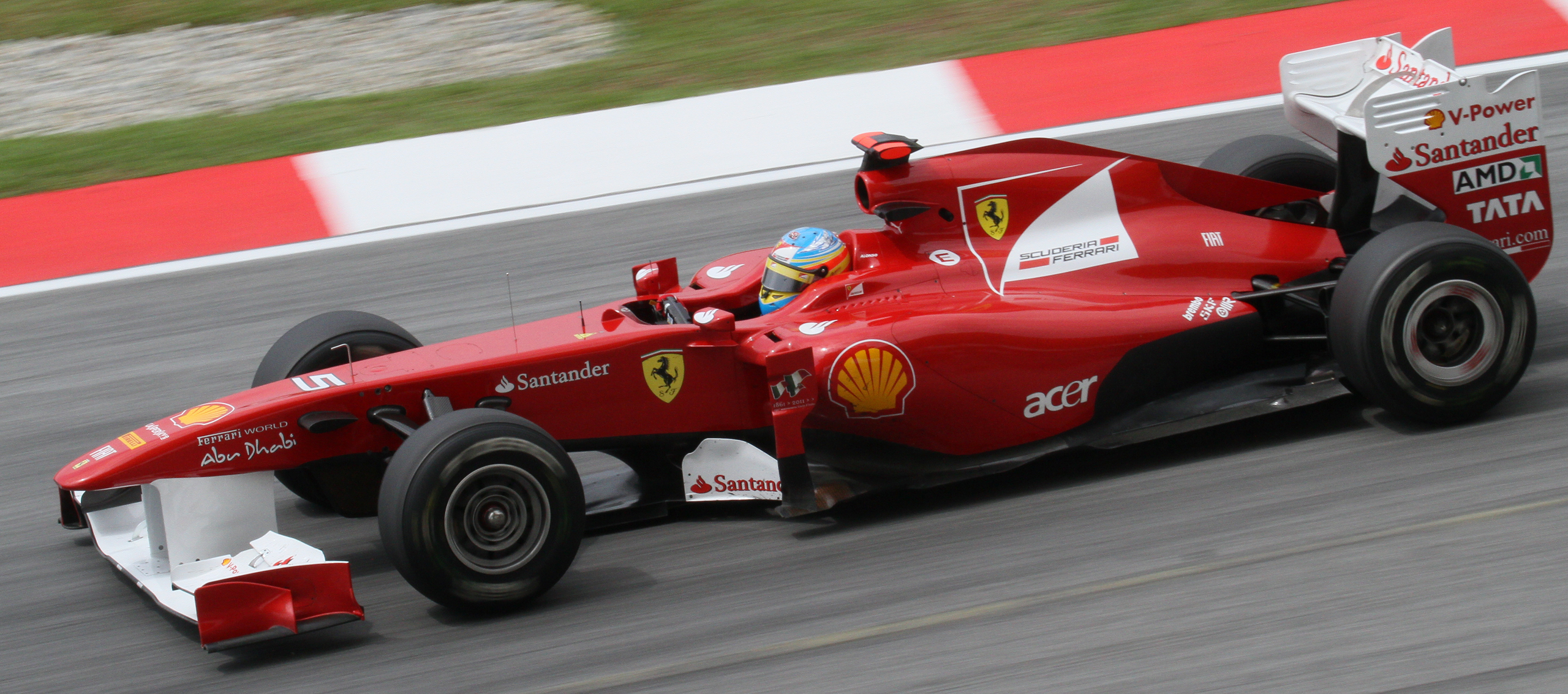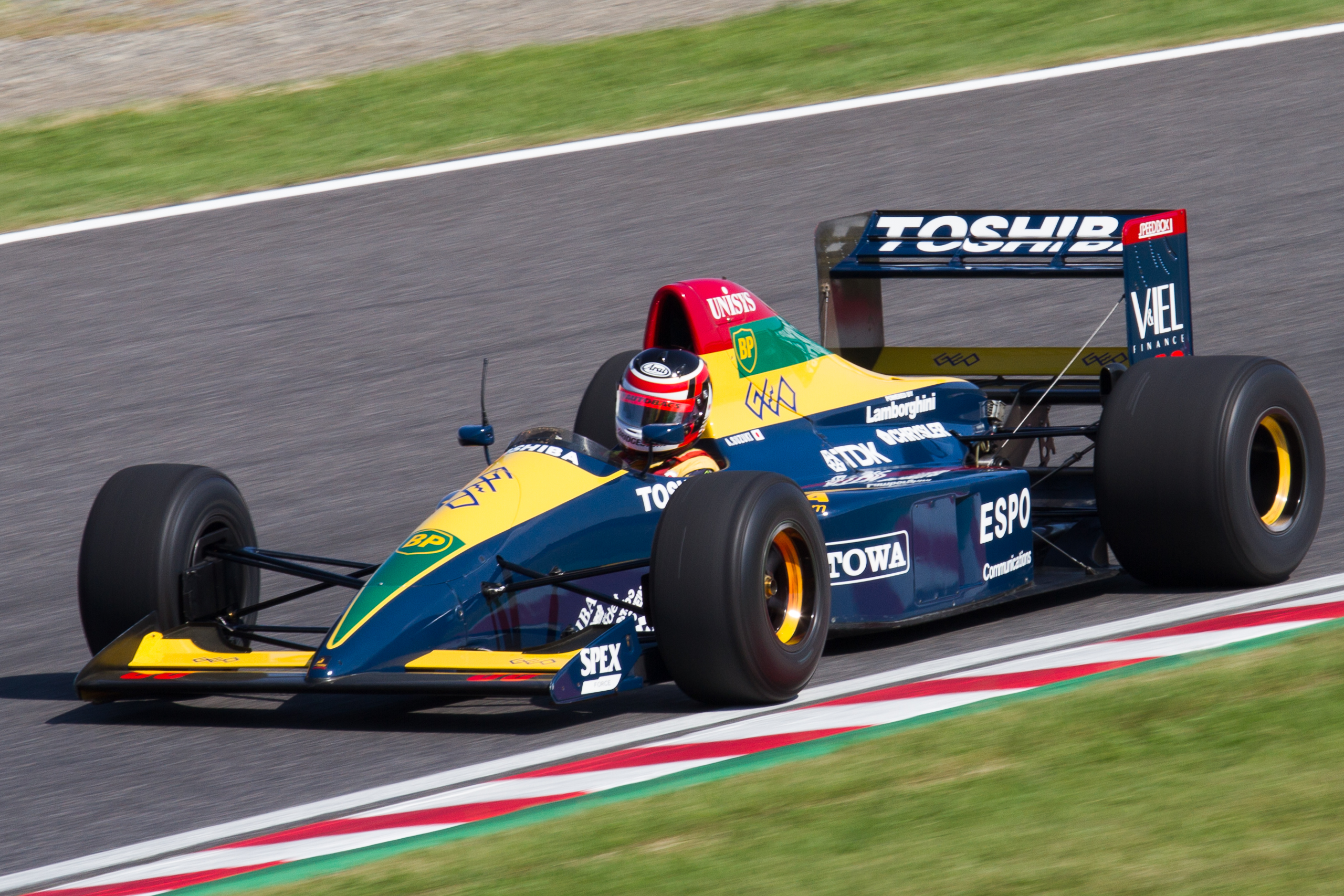|
Toyota 90C-V
The Toyota 90C-V was a racing car built by Toyota, developed as a Group C1 car. It took part in the All Japan Sports Prototype Championship, the World Sportscar Championship, and at the 24 Hours of Le Mans. All Japan Sports Prototype Championship The 90C-V raced in the 1990 All Japan Sports Prototype Championship (JSPC). It raced alongside the 89C-V for the first two races at Fuji. The 90C-V achieved its only victory at its debut race at the Fuji 500 km. The car achieved moderate results for the remainder of the season, finishing in the top 10 in most races. The 90C-V also took part in the first two races of the 1991 season. It finished third and fifth in those races, before it was replaced by the 91C-V for the remainder of the season. World Sportscar Championship The 90C-V participated in the 1990 World Sportscar Championship season. It did not produce the same results as it had in the JSPC. Its best finish came at season opener, where it finished fourth at the 480&n ... [...More Info...] [...Related Items...] OR: [Wikipedia] [Google] [Baidu] |
1990 24 Hours Of Le Mans
The 1990 24 Hours of Le Mans was the 58th Grand Prix of Endurance, taking place at the Circuit de la Sarthe, France, on the 16 and 17 June 1990. Due to the ongoing dispute between the ACO and the FISA governing body, the race was not part of the 1990 World Sportscar Championship season, World Sports-Prototype Championship. This was the last Le Mans run under the Group C formula, and a number of manufacturers put in a major effort to win, with the notable exception of defending winners Sauber-Mercedes. Fitted with a special qualifying engine, Mark Blundell put in a blistering lap to put his Nissan on pole, fully six seconds faster than Oscar Larrauri in the Brun Porsche. Those two cars set the pace in the opening hours. That Porsche was the interloper of an exciting Jaguar versus Nissan battle. The first major incident of the race was in the early evening when the Gianfranco Brancatelli in the race-leading Nissan clipped the Toyota of Aguri Suzuki as they passed by the pits at ful ... [...More Info...] [...Related Items...] OR: [Wikipedia] [Google] [Baidu] |
Group C
Group C was a category of sports car racing introduced by the FIA in 1982 and continuing until 1993, with ''Group A'' for Touring car racing, touring cars and ''Group B'' for Grand tourer, GTs. It was designed to replace both Group 5 (motorsport), Group 5 special production cars (closed top touring prototypes like Porsche 935) and Group 6 (motorsport), Group 6 two-seat racing cars (open-top sportscar prototypes like Porsche 936). Group C was used in the FIA's World Sportscar Championship, World Endurance Championship (1982–1985), World Sports-Prototype Championship (1986–1990), World Sportscar Championship (1991–1992) and in the European Endurance Championship (1983 only). It was also used for other sports car racing series around the globe (All-Japan Sports Prototype Championship, All Japan Sports Prototype Championship, Supercup, Interserie). The final year for the class came in 1993. Broadly similar rules were used in the North American International Motor Sports Associ ... [...More Info...] [...Related Items...] OR: [Wikipedia] [Google] [Baidu] |
Racing Car
Auto racing (also known as car racing, motor racing, or automobile racing) is a motorsport involving the racing of automobiles for competition. In North America, the term is commonly used to describe all forms of automobile sport including non-racing disciplines. Auto racing has existed since the invention of the automobile. Races of various types were organized, with the first recorded as early as 1867. Many of the earliest events were effectively reliability trials, aimed at proving these new machines were a practical mode of transport, but soon became an important way for automobile makers to demonstrate their machines. By the 1930s, specialist racing cars had developed. There are now numerous different categories, each with different rules and regulations. History The first prearranged match race of two self-powered road vehicles over a prescribed route occurred at 4:30 A.M. on August 30, 1867, between Ashton-under-Lyne and Old Trafford, England, a distance of ... [...More Info...] [...Related Items...] OR: [Wikipedia] [Google] [Baidu] |
24 Hours Of Le Mans Race Cars
4 (four) is a number, numeral and digit. It is the natural number following 3 and preceding 5. It is a square number, the smallest semiprime and composite number, and is considered unlucky in many East Asian cultures. Evolution of the Hindu-Arabic digit Brahmic numerals represented 1, 2, and 3 with as many lines. 4 was simplified by joining its four lines into a cross that looks like the modern plus sign. The Shunga would add a horizontal line on top of the digit, and the Kshatrapa and Pallava evolved the digit to a point where the speed of writing was a secondary concern. The Arabs' 4 still had the early concept of the cross, but for the sake of efficiency, was made in one stroke by connecting the "western" end to the "northern" end; the "eastern" end was finished off with a curve. The Europeans dropped the finishing curve and gradually made the digit less cursive, ending up with a digit very close to the original Brahmin cross. While the shape of the characte ... [...More Info...] [...Related Items...] OR: [Wikipedia] [Google] [Baidu] |
Group C Cars
A group is a number of persons or things that are located, gathered, or classed together. Groups of people * Cultural group, a group whose members share the same cultural identity * Ethnic group, a group whose members share the same ethnic identity * Religious group (other), a group whose members share the same religious identity * Social group, a group whose members share the same social identity * Tribal group, a group whose members share the same tribal identity * Organization, an entity that has a collective goal and is linked to an external environment * Peer group, an entity of three or more people with similar age, ability, experience, and interest * Class (education), a group of people which attends a specific course or lesson at an educational institution Social science * In-group and out-group * Primary, secondary, and reference groups * Social group * Collectives Philosophy and religion * Khandha, a Buddhist concept of five material and mental facto ... [...More Info...] [...Related Items...] OR: [Wikipedia] [Google] [Baidu] |
Aguri Suzuki
is a Japanese former racing driver and motorsport executive, who competed in Formula One from to . Suzuki entered 88 Formula One Grands Prix, achieving a best result of third at the 1990 Japanese Grand Prix, becoming the first Asian driver to score a podium finish. He also won the Japanese Formula 3000 Championship in 1988 Japanese Formula 3000 Championship, 1988, and later finished third overall at the 24 Hours of Le Mans in 1998 24 Hours of Le Mans, 1998. He was also a race-winner in the All-Japan GT Championship. He became involved in team ownership after his Formula One career, first forming Autobacs Racing Team Aguri (ARTA) in 1997 in partnership with Autobacs. ARTA has competed mostly in Super GT, where they have won titles in both the GT500 and GT300 classes. He was the owner of the Super Aguri F1, Super Aguri F1 team, which participated in Formula One from to . He also formed Team Aguri, which raced in Formula E from 2014 to 2016. Early life Aguri Suzuki was born in ... [...More Info...] [...Related Items...] OR: [Wikipedia] [Google] [Baidu] |
Suzuka Circuit
The , the , is a long motorsport race track located in Ino, Suzuka, Mie, Suzuka City, Mie Prefecture, Japan and operated by Honda Mobilityland, a subsidiary of Honda, Honda Motor Co, Ltd. It has a capacity of 155,000. It is most well known by its use by both the international Formula One; and Japanese Super Formula championships. Introduction Soichiro Honda decided to develop a new permanent circuit in Mie prefecture in the late 1950s. Designed as a Honda test track in 1962 by Dutchman John Hugenholtz, John "Hans" Hugenholtz, the track has a figure-of-eight layout, with the long back straight passing over the front section by means of an overpass. It is the only FIA Grade 1 licensed track to have such a layout, after the Fiorano Circuit was downgraded to Grade 2 in 2024. The circuit has been modified at least eight times: In 1983 a chicane was inserted at the last curve to slow the cars into the pit straight; the original circuit was an extremely fast track with only one slo ... [...More Info...] [...Related Items...] OR: [Wikipedia] [Google] [Baidu] |
1990 World Sportscar Championship Season
The 1990 World Sportscar Championship season was the 38th season of FIA World Sportscar Championship racing. It featured the 1990 FIA World Sports-Prototype Championship for Drivers and the 1990 FIA World Sports-Prototype Championship for Teams, both of which were contested over a series for cars running under the FIA's Group C formula. The series ran from 8 April 1990 to 7 October 1990 and was composed of nine races. Schedule Entries Results and standings Race results The Montreal race was stopped before 75% distance was completed, therefore half points were awarded. In order to be classified for points, a team had to complete 75% of the winner's distance. Further, drivers were required to complete at least 30% of their car's total race distance to qualify for championship points. Drivers' World Championship Teams' World Championship See also 1990 24 Hours of Le Mans, a race for Group C Sports Prototypes which did not count towards the 1990 World Sports-Protot ... [...More Info...] [...Related Items...] OR: [Wikipedia] [Google] [Baidu] |
Toyota 91C-V
The Toyota 91C-V is a Group C sports prototype racing car, developed and built by Toyota intended to participate in the World Sportscar Championship, the 24 Hours of Le Mans, and the All-Japan Sports Prototype Championship, All-Japan Japanese Sports-Prototype Championship. It is an evolution of the previous Toyota 90C-V, 90C-V. Its powerplant is a turbocharged Toyota R32V/R36V engine, Toyota V8 engine, producing . It won 3 races (including 1 class win), achieved 6 podium finishes, and scored 3 pole positions. At a speed of , it is capable of producing over of downforce. References {{Toyota Sportscar Racers Group C cars Toyota racing cars, 91C-V ... [...More Info...] [...Related Items...] OR: [Wikipedia] [Google] [Baidu] |
Fuji Speedway
is a motorsport race track standing in the foothills of Mount Fuji, in Oyama, Shizuoka, Oyama, Suntō District, Shizuoka, Suntō District, Shizuoka Prefecture, Japan. It was built in the early 1960s. In the 1980s, Fuji Speedway was used for the Fédération Internationale de l'Automobile, FIA World Sportscar Championship and national racing. Originally managed by Mitsubishi Estate, Fuji Speedway was acquired by Toyota in 2000. The circuit hosted the Formula One 2007 Japanese Grand Prix after an absence of nearly 30 years, replacing the Suzuka Circuit owned by Honda. After Fuji Speedway hosted the 2008 race, the Japanese Grand Prix returned to Suzuka for races from 2009 onward. The Super GT Fuji 500 km race is held at the racetrack on Golden Week (Japan), Golden Week. Fuji Speedway has one of the longest Straight (racing), straights in motorsport, at in length. The circuit has an Fédération Internationale de l'Automobile, FIA Grade 1 license. History 1963–79: F1 laun ... [...More Info...] [...Related Items...] OR: [Wikipedia] [Google] [Baidu] |
Toyota 89C-V
The Toyota 89C-V is a Group C sports prototype racing car, developed and built by Toyota intended to participate in the World Sportscar Championship, the 24 Hours of Le Mans, and the All-Japan Japanese Sports-Prototype Championship. The chassis is designed by Japanese company Dome. It is powered by a turbocharged Toyota R32 V8 engine A V8 engine is an eight- cylinder piston engine in which two banks of four cylinders share a common crankshaft and are arranged in a V configuration. Origins The first known V8 was the Antoinette, designed by Léon Levavasseur, a ..., producing . It won 2 races, scored 4 podium finishes, and clinched 3 pole positions. References {{Toyota Sportscar Racers Group C cars 89C-V ... [...More Info...] [...Related Items...] OR: [Wikipedia] [Google] [Baidu] |
24 Hours Of Le Mans
The 24 Hours of Le Mans () is an endurance-focused Sports car racing, sports car race held annually near the city of Le Mans, France. It is widely considered to be one of the world's most prestigious races, and is one of the races—along with the Monaco Grand Prix and Indianapolis 500—that form the Triple Crown of Motorsport, and is also one of the races alongside the 24 Hours of Daytona and 12 Hours of Sebring that make up the informal Triple Crown of endurance racing. Run since 1923, it is the oldest active Endurance racing (motorsport), endurance racing event in the world. Unlike fixed-distance races whose winner is determined by minimum time, the 24 Hours of Le Mans is won by the car that covers the greatest distance in 24 hours. The cars on this track are able to achieve speeds of , and reached on the Mulsanne Straight 1988 24 Hours of Le Mans#Statistics, in 1988instigating the addition of more chicanes to the track to reduce speed reached. Racing teams must balance th ... [...More Info...] [...Related Items...] OR: [Wikipedia] [Google] [Baidu] |






